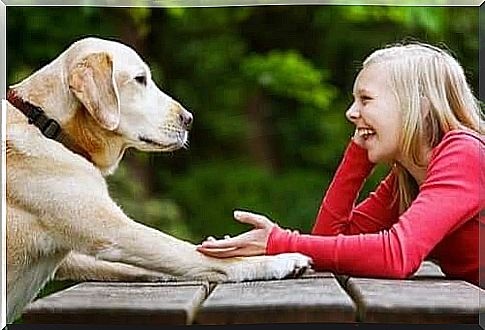How To Choose An Ideal Pet For A Family?

It’s time to choose a pet to join the family. Most believe that adopting a pet is very positive for everyone. But, how to choose an ideal pet for the family?
Children, in particular, enjoy and learn a lot when they have an animal as a companion at home. So, it is very important to know what kind of pet we can adopt. It doesn’t just depend on the tastes of each one, but on other factors, such as domestic habits, health, etc.
Choose an ideal pet: assess the possibilities for the family
Before going out in search of the ideal pet you have to talk and agree on certain points. This facilitates decision and choice times.
1. Budget for care
A pet needs self-care related to food, veterinary examinations, vaccinations and so on. There are some animals that require more attention than others to live healthily.
- You need to know how much money you have per month to pay for this extra cost. That way, make sure you choose a pet that will be really happy and thus avoid headaches.
2. Family lifestyle
When adopting a pet, you also need to think about the amount of time you will devote to it. If family members go to school or work outside the home and most of the time the house is empty, this animal would be alone.
Also, another important point to take into account is whether the family travels a lot during the year. It is necessary to ask a series of questions: who will take care of the pet when we are not at home? Is it possible to take the pet on trips?
In homes where there are small children, you should choose a pet that is able to live with them. Not all are recommended and even less if they cause some type of allergy due to hair. There are also others that are very beneficial for your growth.
3. Everyone will be responsible
It often happens that some people fervently want to have pets, but others just don’t want to know anything about the idea. Therefore, it is essential to discuss and agree with the terms referring to care.
It might be better to specify who will be responsible for your care and hygiene to avoid further arguments. What usually happens is that everyone ends up in love with the pet but no one wants to take care of it.

4. Physical space is critical for the ideal pet
The square meters of the environment are a condition for choosing a pet. Large, active animals will not be comfortable in an apartment, for example. In these cases, it may be convenient to think of an aquarium, which, incidentally, also decorates the place.
When the house has a good garden, they can opt for dogs, which in addition to providing security, can play freely. And if you’re thinking of exotic animals, you need to read the regulations in effect in your region. Likewise, it is necessary to verify that they have everything that is necessary for their maintenance.
5. The tours cannot be missed
Some pets are social beings who wait for their daily walks to be in touch with the rest of the world. So, even if everyone in the family has obligations, someone has to take the pet for a walk.
In the mornings or afternoons, taking a walk with the animal, in addition to uniting owner and animal, helps both to exercise. It is an activity that must be planned and analyzed. If no one wants to do this task, many pets should be discarded as an option.

6. All future plans must include the pet
It seems like it’s already very specific, however, choosing a pet needs these previous approaches. Imagining the future of the family and its changes is essential to know if the animal will be able to stay with you.
If they are thinking of moving, they will have to choose residences where they accept animals and so with each point. Since the pet is already part of the family, it cannot be abandoned.
Choosing an ideal pet: some examples
When they are already looking, the important thing is to inquire about the animal’s personality. Some breeds or types of animals tend to be more sociable and others more solitary. These traits are striking and help you to think about your adaptation to your family.
1. Dogs
Most of the time they are very sociable, affectionate and loyal animals. It is very easy for them to get used to a familiar environment and find their own place quickly. Some breeds love children and become their best friends as soon as they receive their first show of affection.
It also happens that they mark their territory and are sometimes very jealous of their owners. On the other hand, they need to be monitored most of the time. Loneliness is by no means a situation they like and they can prove it by breaking something.
Also, larger dogs generally need more physical activity. It is essential to provide them with a place to run and play outdoors or longer hours of sightseeing.
2. cats
Cats are more suitable for those families that have a smaller physical space. On the other hand, they get along well with silence and few people around them. They can be alone for a while at home and not experience the same anxiety as other pets.
A disadvantage of cats is that their fur is often the cause of some allergies. However, if everyone is healthy at home, it is a good option that is kept with little care.

3. Fish
Fish don’t need more space than an aquarium that can be placed in some corner of the house. Their care is insignificant: just feeding and cleaning their habitat.
Keeping fish is a good exercise to teach children the responsibility of caring for a pet. However, you should make sure they don’t overfeed them so they don’t get sick.
4. Hamsters
Like the previous ones, they don’t need much care either, we just need to keep their place clean and feed them. They can spend a lot of time running around in their cage and children certainly enjoy watching them while they play.
Conclusion
Afterwards, ideally, everyone could participate in the care of their chosen pet when they get home. This way, everyone can enjoy their pet and feel part of a team.
Last but not least: patience, affection and responsibility are the key to achieving a healthy and happy coexistence.








